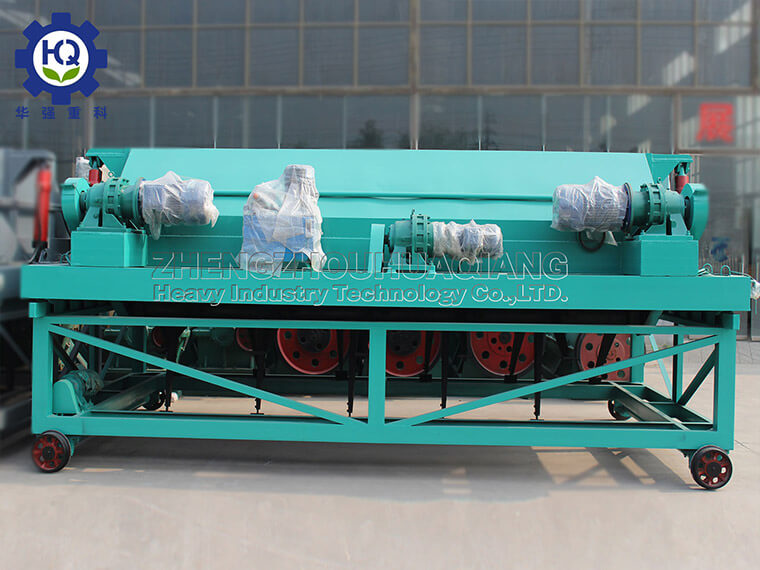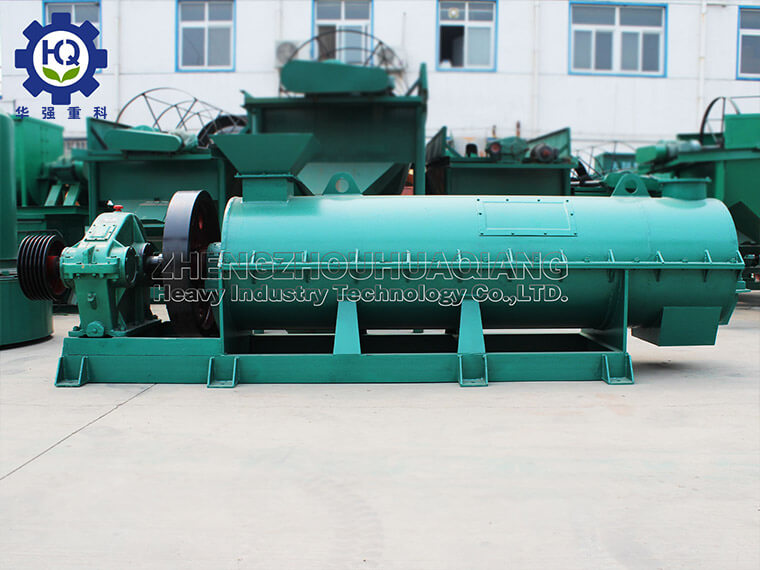Fermentation Technology of Organic Fertilizer Composter for Livestock and Poultry Manure
The organic fertilizer tipping machine is used for the fermentation and tipping of organic wastes such as livestock and poultry manure, sludge waste, filter mud from sugar factories, dregs, cake, straw sawdust, etc. It is also used for the fermentation, ripening, and moisture removal operations in organic fertilizer plants, compound fertilizer plants, sludge waste plants, horticultural farms, and bisporus cultivation plants. Suitable for aerobic fermentation, it can be used together with solar fermentation chambers, fermentation tanks, and transfer machines. When used together with a moving machine, it can achieve the function of multiple slots for one machine. The matched distiller’s grains can be discharged continuously or in batches, with high efficiency and stable operation.
The livestock manure organic fertilizer fermentation equipment/tank type stacker is composed of main components such as a transmission device, a lifting device, a walking device, a stacker device, and a transfer vehicle. The motor directly transmits the power to the cycloidal pin wheel reducer through the sprocket to the tipping drum. The mixing blades on the drum are spiral distributed, which can turn over and stir the materials in the fermentation tank to a position 0.7-1m away, achieving a fast tipping speed and uniform stirring effect, thereby achieving full contact between the materials and the air, making the fermentation effect of the materials better.
The chain plate tipping machine is suitable for the trough aerobic composting of organic solid wastes such as livestock manure, sludge garbage, straw, etc. The traveling system of this machine adopts the advantages of frequency conversion speed regulation, good adaptability to different materials, stable operation, high stacking efficiency, and deep tank operation, effectively shortening the fermentation cycle, improving production efficiency and product quality. The adoption of a variable frequency speed governing walking system can well adapt to changes in working load. The walking speed can be flexibly adjusted according to the material resistance, making the equipment more adaptable and flexible. Optional mobile crane can be equipped to realize the use of multi tank equipment. If the capacity of the equipment allows, only additional fermentation tanks need to be built to expand the production scale and improve the use value of the equipment.








